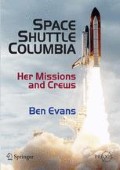Abstract
When Columbia disintegrated above Texas on 1 February 2003, killing her seven-member crew, NASA not only lost its flagship Shuttle but also the chance to send her to the International Space Station. For years, Columbia had been restricted to non-station missions because she was the heaviest of the orbiters and, even with major modifications, could not be trimmed down sufficiently to easily carry large components to the orbital complex. Had she landed safely on 1 February after STS-107, however, that restriction would have been lifted and she would have begun processing in earnest for her first trip to the station.
Access this chapter
Tax calculation will be finalised at checkout
Purchases are for personal use only
Preview
Unable to display preview. Download preview PDF.
Rights and permissions
Copyright information
© 2005 Praxis Publishing Ltd.
About this chapter
Cite this chapter
(2005). Golden age. In: Space Shuttle Columbia. Springer Praxis Books in Space Exploration. Praxis. https://doi.org/10.1007/978-0-387-73972-4_5
Download citation
DOI: https://doi.org/10.1007/978-0-387-73972-4_5
Publisher Name: Praxis
Print ISBN: 978-0-387-21517-4
Online ISBN: 978-0-387-73972-4
eBook Packages: Physics and AstronomyPhysics and Astronomy (R0)

